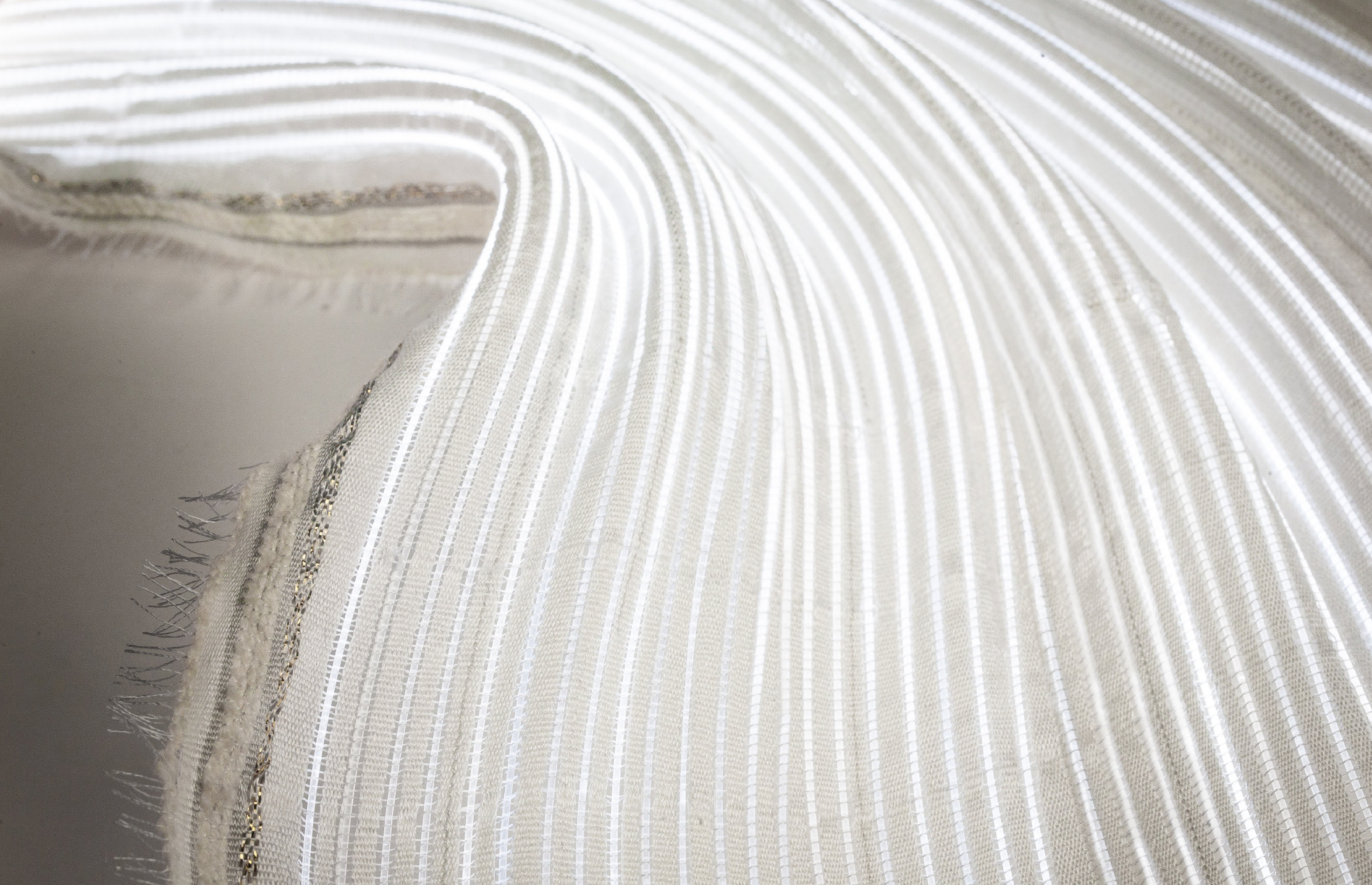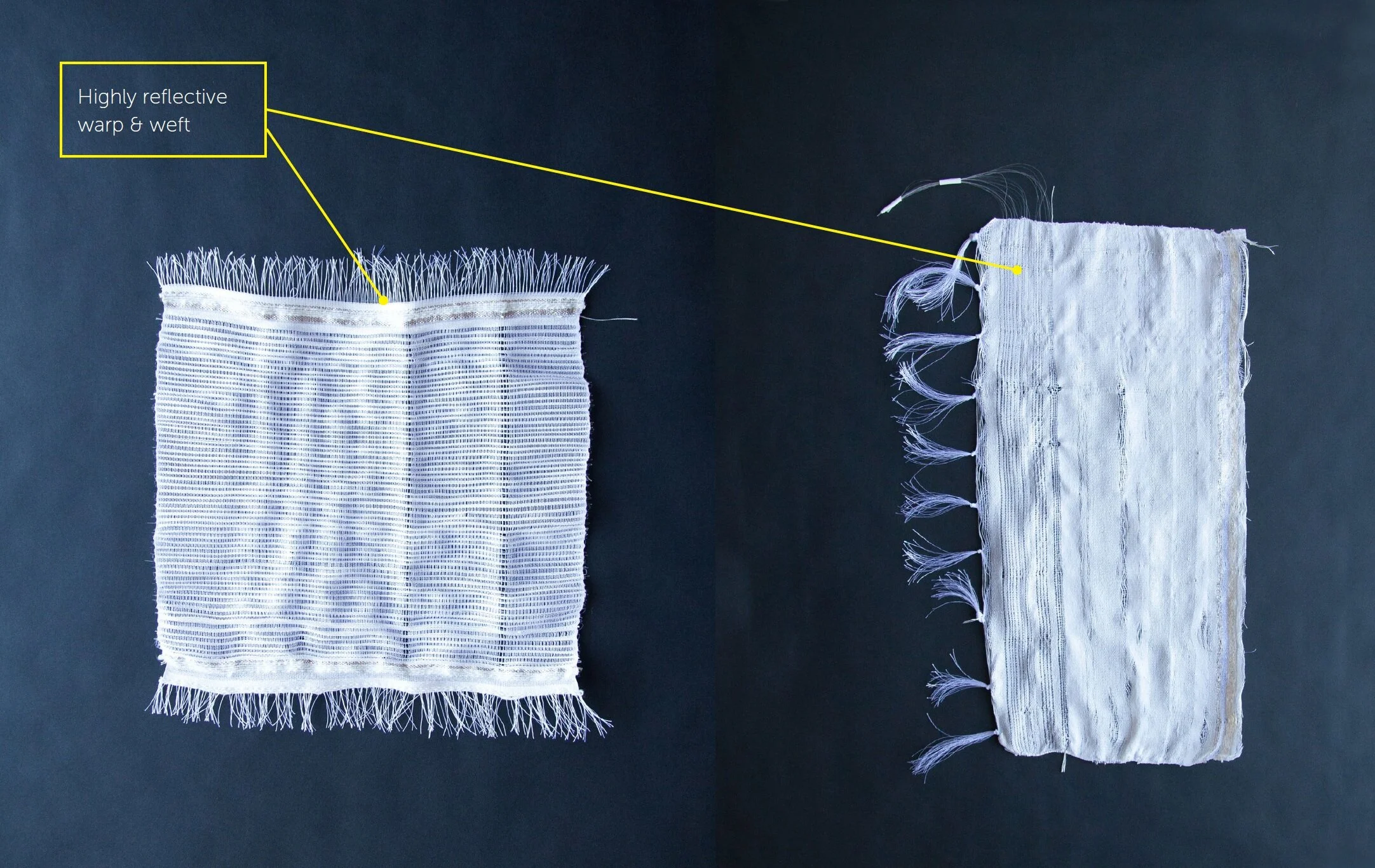Vela Light
Material Experiments
The Vela Light is a luminescent, billowing swath of fabric. Our design responded to the idea of making lighting more personal, with the challenge of making it as flexible and versatile as textiles – a soft, ephemeral, tactile and yet still functional “gleaming second skin”.
Inspired by both the tactile and the flexible qualities of a bandanna, the Vela Light required deep material and process research to merge these unique capabilities with functionality.
FIBER OPTICS WEFT
High-potency fiber optics transfer light throughout Vela’s material. To maximize light evenly throughout the fabric, fiber optic filaments were installed with minimal bends. Stumbling upon the anatomy illustrator Santiago Ramón y Cajal’s drawings of how neurons transmit information through the brain, we found inspiration to weave fiber optics through the fabric in a way that allows the filaments to be illuminated at both ends, meanwhile minimizing the bends of traditional weaving.
This thinner, more thread-like fiber optics was an early contender, but was ultimately too brittle and fragile.
CREATING A REFLECTIVE SURFACE
Vela’s base material needed to augment and diffuse the light output of the fiber optics. Woven samplers were made to test potential warp and weft materials for their luster, reflective qualities, and translucency. Additional samplers tested a variety of weaves, denting, and setts with the same intention: to ensure the fabric qualities bolstered the luminaire’s final form.
Fresh off the loom, prior to the “selvedge binding” process.
BILLOWING LIGHT, ADJUSTABLE FORM
Once Vela’s material comes off the loom, its fiber optic edges are bound into the selvage, creating ribs of structure. This combination of new weaving techniques and the structural qualities of the fiber optics are what allows Vela to create such unique, roomy volumes, lending to its diaphanous surface qualities and vibrant illumination.








